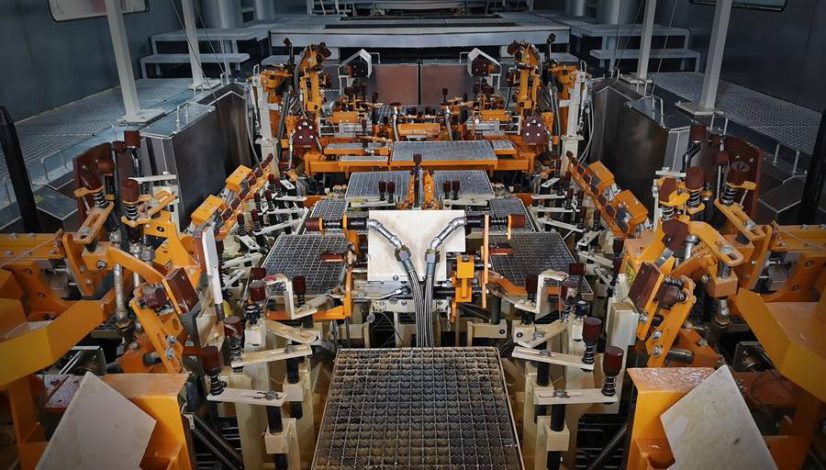Manufacturing Quality in Mexico: A fundamental element of success
Manufacturing quality in Mexico is due to the use of technological instruments that facilitate the control of manufacturing processes and allow for a better performance of the installed productive infrastructure.
The current state of affairs
The Mexican manufacturing industry is one of the country’s economic sectors that has been most affected by the economic crisis caused by the global coronavirus pandemic. During this time, it has been functioning, on average, at 77% of its capacity. Although in some sectors, such as the automotive and auto parts industry, production fell by as much as 44%.
The manufacturing industry in Mexico has recently faced challenges such as maintaining proper cost management, confronting global competition (mainly with countries of the Asian continent), and operating in an environment that is lacking needed structural change, among other issues. Although each sector is impacted differently, most organizations seek to maximize their business opportunities and to maintain manufacturing quality in Mexico
However, Mexico’s manufacturing and non-manufacturing activities showed a positive performance in April. This development suggests that the recessionary phase of the economy caused by the pandemic is over. This opinion is the consensus point of view that has been communicated by the Mexican Institute of Finance Executives (IMEF). In recent months, the manufacturing IMEF indicator has stood at 51.6 points. This is a marginal increase of 0.5 points over the previous month, indicating that the downward trend is now behind the Mexican economy. Given the fact that that a positive horizon is looming for Mexican industry, manufacturers face the challenge of obtaining results immediately and consistently. Manufacturing quality in Mexico can be improved by increasing the supervision of production lines and implementing the controls that allow them to remain competitive. Producing with quality will give added value to consumers of Mexican-made products and result in better financial performance for the company by reducing costs related to losses caused by defective products.
Technological tools that help to boost manufacturing quality in Mexico
Among the technologies that have proven their effectiveness in maintaining manufacturing quality in Mexico are industrial vision systems, which help improve production processes through automated, fast, and accurate monitoring. With this technology, companies have certainty about the condition and quality of the products they bring to market. The computer vision applied in the monitoring and recording of production conditions helps improve the company’s quality record. This is important because a product with poorly printed label manufacturing defects, dislocation, without exact filling, or with impurities represents financial losses even if it does not leave the production plant.
For this reason, production systems must be error-free. If errors do occur, however, they must be reliably detected to reject the defective product and ensure the integrity of each production batch. Otherwise, in extreme cases, production must be withdrawn from the market from one to several complete lots, with the consequent financial cost that reduces the profit of manufacturing companies.
Product quality
Another important factor that positively affects manufacturing quality in Mexico and helps to make production processes more efficient, and acts to optimize companies’ resources through technological vision tools is product tracking. Product tracking is an activity that is also known as traceability.
Traceability is the new way of understanding marketing. Good traceability can help companies improve their distribution and add a differentiator in their products that is related to security, control, and logistics tracking.
Using this approach has excellent added value in terms of safety in case of contingency. By knowing the exact manufacturing conditions, companies can determine with accuracy and certainty which product presents problems. This information can be efficiently removed from the distribution chain, thus avoiding massive withdrawals and saving significant sums of money.
Requirements for industries include linking production condition records to output batches to determine manufacturing quality in Mexico, relating them to a specific number of items per lot. Other records that are kept include destination, route, identification of the type of vehicle involved in the shipment, production line, contact – destination, etc. This allows a product to have strategic information about the production parameters implemented on its labeling. Additionally, other manufacturing records serve to identify manufacturing conditions from the beginning of production. This allows manufacturers to configure their systems better, thus saving on production and maintenance times. Once the best way to mark a part of a product has been determined, the manufacturer has an unparalleled strategic tool to know the movement of its products and use this information in the deployment of distribution strategies, businesses, and alliances. In the same way, it allows manufacturers to correctly identify a potentially problematic lot and act accordingly. If required, the specific problematic lot can be removed.
While investment in industrial vision technology will require the use of some of the companies’ resources, the return on investment (ROI) will be notable as it lacks waste, optimizes equipment, and facilitates the maintenance of the production line. An investment of this type in Mexican manufacturing quality will also help avoid misordering and costly product recall and replacement operations.
In these difficult economic times, optimizing product quality and reducing manufacturing costs are more critical than ever. It is also important to note that manufacturers are well-advised to develop a savings plan for inspection, automation, or identification applications on their production and manufacturing lines.
Companies know that crises such as the current coronavirus epidemic can create conditions conducive to finding potential areas for quality improvement and further product development. In this context, computer vision systems can help manufacturing companies get through a period of crisis faster and in a better position. The result of such efforts will be superior quality products that ensure the confidence of demanding customers and the increased competitiveness of companies that succeed in reducing their costs.

